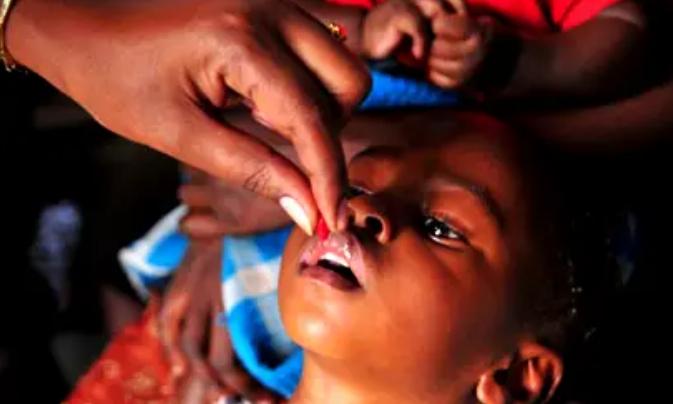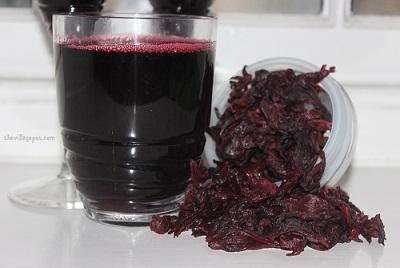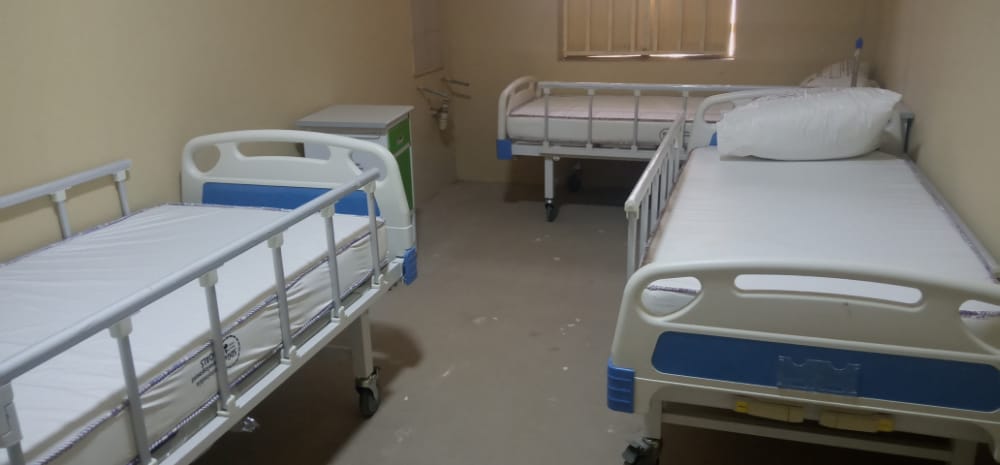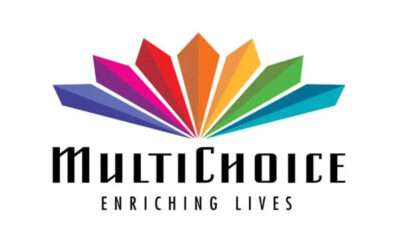Health
Why Immunisation Coverage Remains Low In Nigeria
Published
2 years agoon
By
Editor
One of the major reasons Nigeria is committed to the goals of the Global Vaccine Action Plan, GVAP, was not only to ensure that at least 90 per cent of children under the age of 5 are immunised with all the relevant and available vaccines for children but to put to an end or reduce to the barest minimum child killer diseases.
Sadly, with the slow progress being made in immunisation coverage, Nigeria still falls short of the goal it set with only 57 per cent of children immunised in the last five years, according to the 2021 Multiple Indicator Cluster Survey, MICS, and the National Immunisation Coverage Survey, NICS, jointly released by the Nigerian Government, the United Nations Children’s Fund, UNICEF, in partnership with other partners.
Findings by Good Health Weekly showed that many mothers and caregivers still have reservations about immunisation, leaving Nigeria with only 36 per cent of children aged between 12 and 23 months receiving all recommended vaccines, according to the 2021 MICS.
Even though the benefits of vaccines are fully realised when children receive all recommended vaccine doses promptly, many of these children receive incomplete doses.
READ ALSO: Polio Immunisation: Over 1m Children Targeted In Bauchi
A case in point is that of Abdul Abdul. At age 1, Ahmed received only one immunisation which was given to him a few days after his birth at one of the Lagos State Primary Healthcare Centres.
Bola, Abdul’s mother, said he was not himself after the first dose of BCG, which discouraged her from returning for the other immunisations.
“I was afraid that my child would have more complications if I went back for another immunization. He had a fever for days. Although I tried to go back for measles the day I went to the PHC, we were told to come back and I have not been able to go back due to time and he is now more than nine months. I lost my first child I don’t want to lose another. ” she said
Like Abdul, many children in Nigeria have either received one or two immunisations and some have not received any at all due to unsubstantiated reasons.
Today, immunisation coverage in Nigeria is below GVAP goals, putting millions of children at risk of vaccine-preventable diseases all thanks to these unfounded factors.
However, findings by the MICS report, showed that gaps in routine immunisation in Nigeria. It shows that 64 per cent of children aged 12-23 months did not receive all routine immunisations, 46 per cent did receive but not all doses, 18 per cent did not receive any one, and 30 per cent thought the child was fully immunised.
Other reasons found by the survey showed that 51 per cent lack knowledge or information, while 7 per cent complained that the immunisation site was too far and 19 per cent was due to service delivery issues and 11 per cent reported that mothers or caregivers too were busy, 24 per cent lack of time or other family issues, 11 per cent had fear of side reactions and 26 per cent due to mistrust or fears.
According to the report, a fully vaccinated child must have received all 1YL antigens including BCG, OPV0, HepB0, OPV1-3, IPV, Penta1-3, PCV1-3, YF, Meningitis A & MCV1.
Sadly, even though the benefits of vaccines are fully realised when children receive all recommended vaccine doses promptly, only 36 per cent of children aged 12- 23 months received all recommended vaccines in Nigeria. The report also notes that more children were fully vaccinated in the southern zones compared to the northern zones.
From the survey, nearly 2 of every 4 rural children received Penta3 and children in the richest quintile were more than twice as likely to receive Penta3 as those in the poorest quintile.
“Immunisation coverage varies dramatically across Nigeria and improvements are needed in nearly every state,” the report stated.
However, the report also found that two states -Ebonyi and Enugu have estimated leads among states with the lowest number of children not vaccinated.
The two states have the highest number of Penta3 coverage above the 90 per cent goal. Penta3 coverage is notably higher in the southern zones than in the north.
“Children are significantly less likely to have received 3 doses of pentavalent vaccine if they are from poor families or rural families or if the child’s mother is younger than 25 years of age or has a low level of education,” the report revealed.
In the NICS 2021 survey, only 56 per cent of children showed a child health card and the availability of child health cards varied across states, with a high of 98 per cent in Ebonyi and a low of 16 per cent in Sokoto. States with low immunisation coverage also had low card availability. Child health cards are important health records critical for evaluating immunisation status.
It also found that in 3 of 6 zones there are significant differences in zero dose prevalence between urban and rural households, with rural children more likely to be zero doses. In 4 of 6 zones, there are significant differences across one or more categories of maternal education, with less educated mothers likely to have zero-dose children. In 5 of 6 zones, there are significant differences between the poorest and richest wealth quintiles, with poorer households more likely to have zero dose children.
READ ALSO: Rotary Club Not A Religious Organisation, Secret Society, Says President
UNICEF’s Chief of Monitoring for Result (M4R), Mr Claes Johanson who traced most deaths of children to lack of immunization, told Good Health Weekly that, although the 2021 immunisation report showed a little improvement from the 44 per cent and now 57 percent, has a huge impact on child mortality. He said women’s education has a huge impact on immunisation.
Johanson who said the smallest proportions of children who did not receive any vaccinations are found in Enugu with 1 per cent, Ebonyi, 0 per cent and Sokoto with 51 with r cent said the benefits of vaccines are fully realised when children receive all recommended vaccines doses promptly.
Johanson said while there was a little progress, there was room for improvement, adding that, action should be a priority for the Nigerian government.
VANGUARD
You may like

By Silver Yeibake
Autism, commonly known as Autism Spectrum Disorder (ASD), is a neurodevelopmental disorder that affects communication, social interaction, and behavior. Autism is referred to as a spectrum condition since it can manifest in a variety of symptoms and abilities. While the actual cause of autism is unknown, evidence suggests that genetic and environmental factors interact to influence its development.
The risk factors include a sibling with autism, advanced age of parents, exposure to certain air pollutants and pesticides before birth, extreme prematurity, mothers with diabetes, immune system disorders or obesity, any difficulty with delivery leading to deprivation of oxygen to the baby’s brain, fever during pregnancy, lack of certain vitamins minerals during pregnancy, and certain genetic conditions, such as Down, fragile X, and Rett syndromes.
“Risk factors can not on their own cause a disease. However, they can increase the likelihood of that disease in a person.”
It is important to know that contrary to trending claims online, there is no scientific or medical evidence that vaccines or consumption of sugar are risk factors for autism.
READ ALSO: Kidney Stones: What You Need To Know
Autism is defined by difficulties in social interaction and communication. Individuals with autism may struggle to grasp social cues, maintain eye contact, and engage in typical back-and-forth conversations. Some people may also engage in meaningless, repetitive actions, such as hand-flapping or rocking, and have strong interests in specific areas.
It is essential to remember that autism is a lifelong diagnosis, but with early intervention and adequate care, people with autism can live fulfilling lives.
Autism treatment frequently includes behavioral therapy, speech therapy, occupational therapy, and social skills training. Each individual with autism is unique, thus interventions should be tailored to meet their personal needs and strengths.
In spite of the difficulties that autism can cause, many people with autism possess unique talents and abilities. Some people may succeed in fields such as music, art, mathematics, or programming, thus it is important for society to acknowledge and honor the qualities and achievements of people with autism.
In summary, autism is a complicated and diverse disorder that affects individuals in various ways. By raising autism knowledge, understanding, and acceptance, we can build a more inclusive society in which people with autism can thrive and attain their full potential.
Dr. Yeibake, Weriwoyingipre Silver.
Senior Registrar,
Faculty Of Pediatrics,
WACP
Health
Don Confirms ‘Zobo’ As Antihypertensive Therapy
Published
2 months agoon
March 10, 2024By
Editor
The Deputy Vice Chancellor, University of Nigeria Enugu Campus, UNEC, Prof. Daniel Nwachukwu, after research findings and clinical trials in both animals and human, has confirmed that Hibiscus Sabdariffa, popularly called ‘zobo’ drinks, has all the curative potentials as an antihypertensive therapy.
Nwachukwu, who is a Professor of Cardiovascular Physiology in the university, stated that the antihypertensive effectiveness of the Hibiscus Sabdariffa (zobo) was comparable to those of known antihypertensive drugs that are popular in the retail pharmacies, adding that zobo’s availability, cheapness and absence of side effects make it attractive as an alternative therapeutic agent in mind to moderate hypertensive subjects.
He however cautioned that care should be applied to avoid abuse in the consumption of Hibiscus Sabdariffa (zobo), adding that the therapy could interfere with some anti-malaria drugs while its high dose was also reported to have toxic effects on the liver and kidney.
READ ALSO: How Airline Pilots Fell Asleep Mid-flight – Safety Agency Reveals
Nwachukwu’s discoveries were contained his 201st Inaugural Lecture of the University of Nigeria with the topic “The Marriage Between the Cardiovascular System and Hibiscus Sabariffa: Let no One Put Asunder,” delivered at the moot court hall, Law faculty of the University of Nigeria, Enugu campus.
The DVC warned that Hibiscus Sabariffa consumption is not recommended for persons with low blood pressure because of its well established hypotensive action, advising that during combined therapy with antihypertensive drugs, the blood pressure, BP, must be carefully monitored.
He recommended that industrialists and investors should support large scale production of Hibiscus Sabariffa beverage and its distribution to rural communities in Nigeria, particularly since the raw materials (Hibiscus Sabariffa calyx and water) are cheap and readily available.
READ ALSO: Man Stabs Two Women To Death At A Mexico Varsity
According to Nwachukwu, “This lecture is intended to draw the public attention to our research efforts and unveiling the antihypertensive ability of Hibiscus Sabariffa which is called zobo in our common parlance. What we used for our studies was the same concentration as the locally produced zobo, and we found out that it exerted significant antihypertensive ability, in some cases even higher than the antihypertensive drugs and also did combination therapy with other antihypertensive drugs.
“What is significant is that this zobo is within us, it’s very cheap and it does not have any side effects compared to other antihypertensive agents. The raw material is just to buy zobo, prepare it under hygienic conditions, boil water and put it, sieve it and drink. It may have a sour taste but we do not encourage people to add things like pineapple or sugar in order to make it sweet, because once you do that, you are diluting or reducing its antihypertensive effectiveness.
“We have demonstrated it, both in animal studies and in humans. We are the first to do clinical trials, using mild to moderate antihypertensive Nigerians and we found it very useful. Some of the results show that one can actually use it and we equally saw that you can use it to prevent even diabetes from occurring because it reduces the rise in glucose level.”
READ ALSO: Adolescent Girls Face Risks Of Sexual Violence – UNICEF
Vice Chancellor of the University, Professor Charles Igwe while summarizing the lecture said that the lecture was in three dimensions; one on health grounds, another in academics and the third an economic value.
“Its economic in the sense that we can also begin to use what God has given us to make money. Maybe because God gave us everything in abundance in this country, we don’t recognize the simplest things God gave us in our environment. Therefore, what we are saying is that we should begin to, at all these pure water productions and incorporate zobo production so as to make money out of it.
“The university has made its contribution through our laboratories and it’s now left for the business community and the industries to come and buy into it and start widening it and make it very economic,” Igwe suggested.
Vanguard

By Silver Yeibake
Hi, did you know that Tuesday 12th March, 2024 is world Glaucoma day?Kindly avail yourself of this opportunity to learn about this important health issue as presented below:
Glaucoma is a dangerous eye disorder that damages the optic nerve, causing visual impairment or permanent blindness if not treated.
The optic nerve transmits visual information from the eye to the brain. Damage to this nerve might cause gradual visual loss that is not immediately obvious.
Worldwide, this disease affects 67 million people and contributes 6.7 million of blindness in this population. Glaucoma is the leading cause of blindness in the world.
The total number of cases is expected to increase to 111 million by 2040. Males are slightly more affected than females.
One of the basic causes of glaucoma is an increase in intraocular pressure (pressure within the eyeball), which can eventually damage the optic nerve (the nerve that makes seeing possible). This increase in pressure could be caused by an accumulation of aqueous humor, the fluid that nourishes the eye.
FROM THE AUTHOR: Food Poisoning: What You Need To Know
There are several forms of glaucoma, including open-angle glaucoma, angle-closure glaucoma, normal-tension glaucoma, and secondary glaucoma, each with unique characteristics and treatment choices.
Some of the risk factors for glaucoma include sustained elevation of intraocular pressure, family history of glaucoma, race (African, Asian), short-sightedness, long-sightedness, age over 50, previous eye injury or surgery, hypertension, diabetes mellitus, migraines, and prolonged steroid therapy.
Glaucoma symptoms may not appear until the problem has advanced sufficiently, therefore regular eye checks are essential for early detection. Blurred vision, eye pain, nausea, and light halos are some of the most frequent glaucoma symptoms. However, these symptoms might be mild or readily misinterpreted as other eye problems, emphasizing the significance of regular eye examinations.
Glaucoma treatment tries to reduce intraocular pressure and protect the optic nerve from further damage. This can be accomplished using a variety of approaches, including prescription eye drops, oral medicines, laser therapy, and surgical procedures. Treatment options are determined on the kind and severity of glaucoma, as well as personal characteristics such as overall health and medical history.
To summarize, glaucoma is a serious eye disorder that requires timely diagnosis and treatment to prevent irreversible vision loss. Regular eye examinations, early detection, and commitment to treatment plans are critical for protecting vision and eye health in glaucoma patients.
Thank you.
Dr. Yeibake, Weriwoyingipre Silver, a
Senior Registrar, Faculty Of Pediatrics, West Africa College of Physician (WACP), writes from Yenagoa, Bayelsa State.

IPMAN To Shutdown 30,000 Filling Stations Over N200bn Debt

Detained Binance Chief’s Wife Drags Nigeria Before US Parliament

14-year-old Boy Killed In London Sword Attack
Trending

 News4 days ago
News4 days agoDSTV Price Hike: Five Alternatives Nigerians Are Opting For

 News3 days ago
News3 days ago‘I Can’t Breathe’ – Black Man Cries As US Police Handcuffed, Pinned Him Down Till He Dies [VIDEO]

 News4 days ago
News4 days agoLate Actor, Junior Pope’s Funeral Arrangement Released

 Metro4 days ago
Metro4 days agoTwo Fake Police Inspectors Arrested In Edo

 Metro5 days ago
Metro5 days agoBREAKING: Scores Trapped As Building Collapses In Kano

 Entertainment4 days ago
Entertainment4 days agoJUST IN: Nollywood Veteran Actor, Ogunjimi Is Dead

 News3 days ago
News3 days agoJUST IN: Popular Gospel Singer Is Dead

 Metro2 days ago
Metro2 days agoEdo Police Arrest Suspected Cultists Who Allegedly Killed Rival In His Daughter’s Presence

 News3 days ago
News3 days agoOba Of Benin Suspends Six Officials For Posing As Palace Emissaries To Ooni Of Ife

 News4 days ago
News4 days agoCurrency Manipulation: EFCC Arrests 34 Currency Speculators In Abuja




























